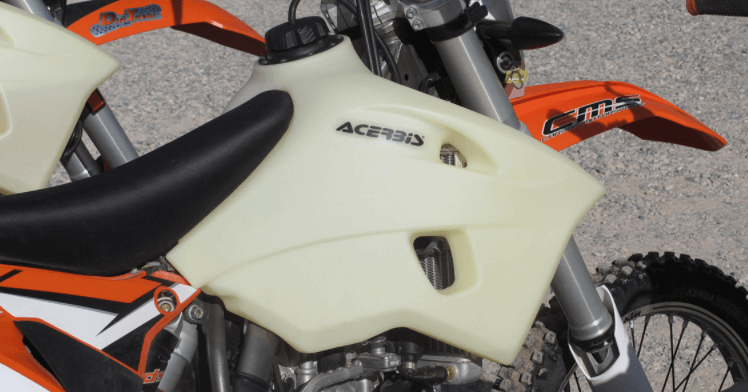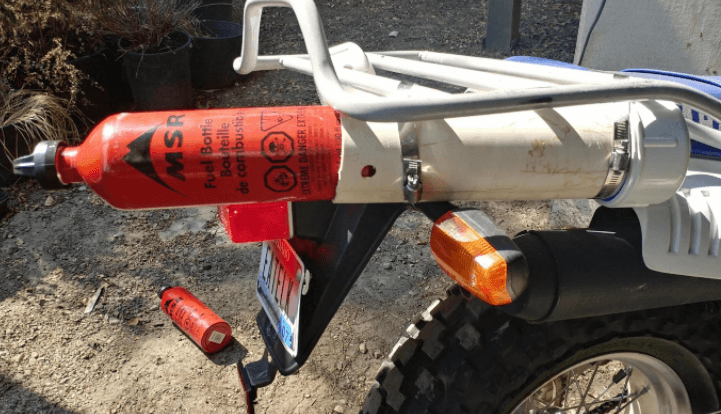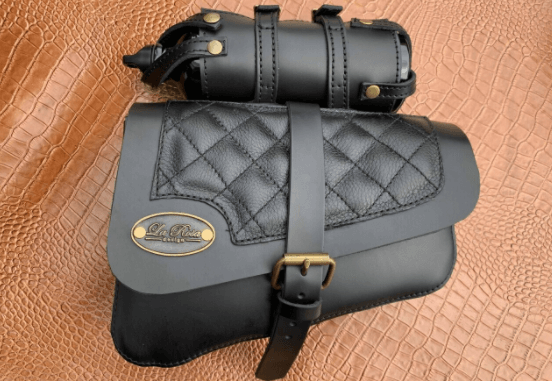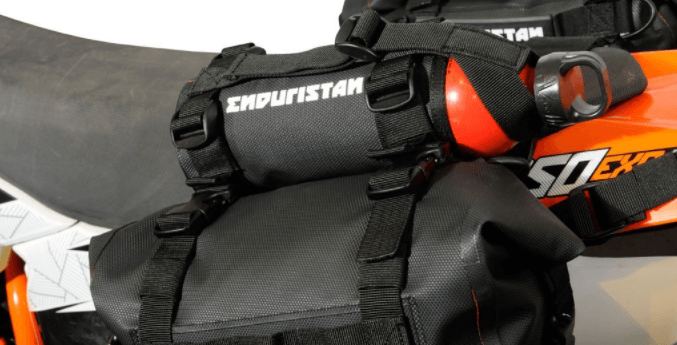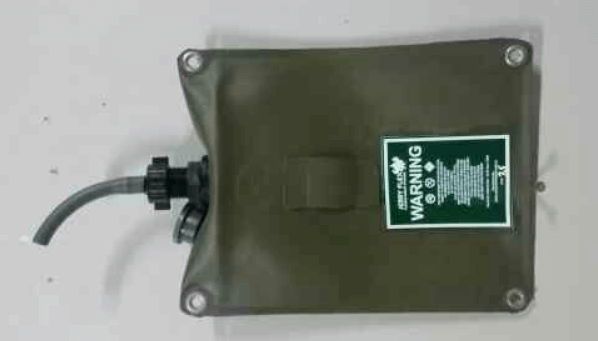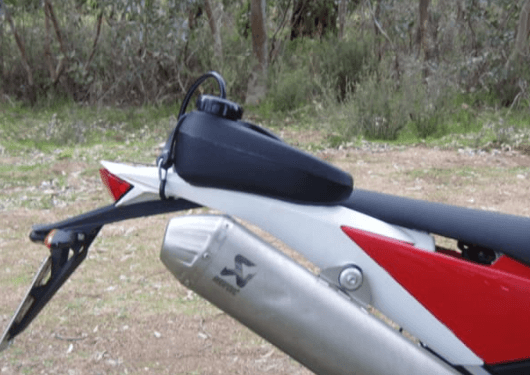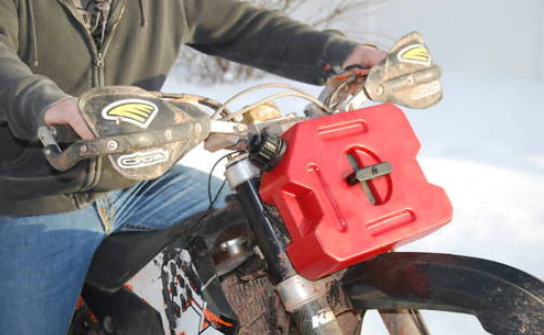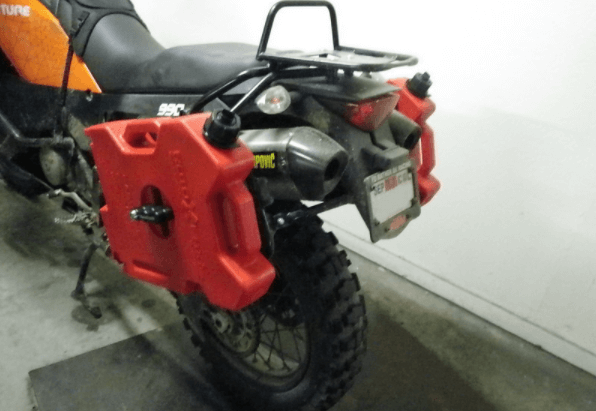James Albert is a dirt biker for about 6 years with a passion for helping others get into the sport without knowing anything. He shares...Read more
Riding a dirt bike is a fast and thrilling experience. Sometimes the urge to ride for long-distance kicks in, which becomes nearly impossible because the bikes have relatively small tanks.
We, as riders, face the problem quite often and wonder how to carry extra fuel on a dirt bike to supplement this insufficiency for a better experience.
You can get a high capacity desert gas tank for better coverage, carry extra fuel bottles, or even store some fuel on your saddle! Fuel bladders and holster fuel carriers are common as well.
The number of riders riding long distances on the roads has led to solutions to the fuel’s insufficiency, thoroughly explained below.
How To Carry Extra Fuel On A Dirt Bike?
Usually, dirt bikes run for short distances, but the need arises for a long one. It is essential to know what’s around to avoid any mishap along the way. Firstly, there are two types of dirt bike engines, the two-stroke, and four-stroke.
This is an essential factor to note that the four-stroke machines withstand the pressure of traveling a long distance. It means that traveling long distances with a two-stroke engine will break down the engine.
Another factor to consider is that two-stroke engines require a constant supply of fuel and 2-stroke oil to lubricate the pistons and cool the engine. The rider must stop at specific intervals to service the engine. It is pretty tiring, but running on only fuel will rapidly overheat the piston and cylinder, resulting in a seized engine.
Most 2-stroke bikes are only for racing or ridden around a motocross track, where the frequent acceleration necessitates extra fuel and oil to lubricate and cool the engine. These engines dislike constant, low RPMs because they risk depriving the engine of cooling lubricant.
A 2-stroke bike will be much less economical than a 4-stroke dirt bike of comparable performance. Many two-stroke motorcycles have small fuel tanks because it doesn’t travel long distances. It will increase the cost of the trip and necessitate the carrying of additional fuel.
Although people have successfully traveled far distances with the 2-stroke engine, it is crucial to go prepared to cover maintenance costs.
Dirt bikes typically have smaller fuel tanks with poor mpg. On a full gas tank, dirt bikes can travel between 30 and 150 miles. That’s not that much! So, if there is a need to ride for more than a few hours, it is vital to know how to carry extra fuel on a dirt bike. It solves the problem of fuel scarcity along the road.
Below are a few vessels approved and tested by bike riders, which has helped secure fuel for an impromptu halt of the bike.
1. High Capacity Desert Gas Tank
Desert Gas tanks are simple replacements for the initial tanks installed on the dirt bikes. In other words, it is an upgrade in terms of the quantity of fuel the dirt bike carries. It has a capacity of 12-15 liters. There are brands like Acerbid and IMS.
Pros
- It only needs a one-time replacement.
- After installation, it supplies fuel directly to the engine.
- The tank’s structure makes the weight of extra fuel balanced on the bike.
- It can carry a large quantity of fuel.
Cons
- It is expensive, a tank is as high as $300 where you can find dirt bikes under 500!
- It increases the overall weight of the bike.
2. Fuel Bottles
These are aluminum bottles that save and transport fuel. The aluminum linen offers better protection from shock and any other impact. The bottles are a perfect option for transporting smaller amounts of fuel, so it will take a few bottles to fill a tank. One of the largest bottles is about 900ml, and it costs $16.
Pros
- It is very light.
- It is durable and strong; can withstand any impact.
- It is cheap.
Cons
- It can only carry a small amount of fuel.
- It is not easy to transport.
- There is a need to stop for a refill.
3. Store Your Fuel Bottles in a Saddle Bag
A more convenient way to transport fuel bottles is with saddlebags. It’s a zipped-up bag attached to the upper end of the fuel tank or the back of the seat. Bags are rigid and carefully woven to withstand sudden shock and protect the bottle throughout the journey.
A rider can carry several bottles at once and more conveniently with a saddlebag. There is also a provision for storing drinks. This is a perfect gadget, just like dirt bike GPS, or Hydration Pack.
4. Holsters
Holsters are cheaper than saddlebags but not as convenient. Holsters are stored beneath handles, around gas tanks, or sideways in a convenient location where they do not obstruct the rider.
5. Liquid Containment Fuel Bladder
Fuel storage bladders are a kind of Flexi-bag used as a fuel containers. It is a foldable, flexible storage bladders that transport and store fuels. The bags are pretty convenient and can be attached anywhere on the bike. The bladder can be rolled up and tucked into a backpack or stored elsewhere when empty. There are different sizes in the market, and a 15L size costs about $145; it depends on the store.
Pros
- It is easy to attach to any part of the bike.
- It is cheaper compared to the Desert gas tanks.
- It is foldable; it is easy to tuck away when empty.
Cons
- In the presence of a sudden fire hazard, it is dangerous.
- It is not directly linked to the engine; there is a need to stop for a refill.
- In the presence of a fire hazard, it is dangerous.
6. Auxiliary Fuel Tank
They are another vessel that can carry fuel. It is made from plastic and looks like a Jerry can, but it can supply power directly to the engine with additional structural properties. There are different varieties of the tank. It depends if it is for the rear, front, or handlebars. The handlebar tanks are the smallest; it is a good thing not to disrupt balance when riding.
Pros
- There is no need to stop and refill; the fuel is siphoned directly into the main tank
- It is not expensive.
- It is not heavy.
- It is easy to use.
Cons
- It cannot carry a large amount of fuel.
- It is easily damaged, which causes leakage.
7. Rotax System
This is a fuel system designed by RotaPax; their goods are made of thermoset plastics and are hard and long-lasting. It can carry up to 17 liters of fuel and cost about $100.
Pros
- It carries a large amount of fuel.
- It is solid and durable.
Cons
- It is cumbersome because of the thermoset.
- It is not convenient.
Transportation of fuel is in various ways, but it can be hazardous, primarily if the proper method and vessel are not used. That is why riders must ensure that the fuel is entirely secure and not leak. Also, ensure that dirt bike riders are tested and approved to avoid accidents.
And if you don’t have a bike yet, and plan to carry an extra fuel tank, be sure to get a dirt bike with high weight capacity.
How You Shouldn’t Carry Extra Fuel
There are other means to carry fuel, but it might pose a risk to not just the rider but to people around. Regardless of the methods listed above, if any vessel is misused, it can cause a disaster.
Below are some wrong means to carry extra fuel that every rider must abstain from. Please do not wear the fuel vessel on the body; it is extremely risky. During a cause of an accident like a spark or fire outbreak, a severe burn can occur.
Use vessels that are leak-proof. Fuel is very volatile, and it is essential to contain adequately; a fire hazard will occur in the presence of a flame. Do not store fuel in excess. It is okay to store just the right amount needed for a particular journey; anymore would not be convenient to carry.
Summary
Now that you know how to carry extra fuel on a dirt bike, it can be a great way for you to go for longer rides on your bike. There are several methods as described above, and it is crucial to observe safety practices at all times.
As for the amount, the estimate is easily calculated depending on the bike and the fuel consumption rate per mile. Take care not to mix different types of fuel. Using the incorrect kind of fuel in the dirt bike is detrimental to its performance.
James Albert is a dirt biker for about 6 years with a passion for helping others get into the sport without knowing anything. He shares his expertise and reviews dirt bikes and related tools.
More Posts

